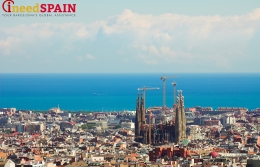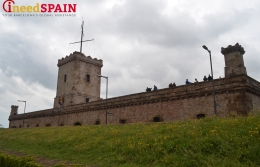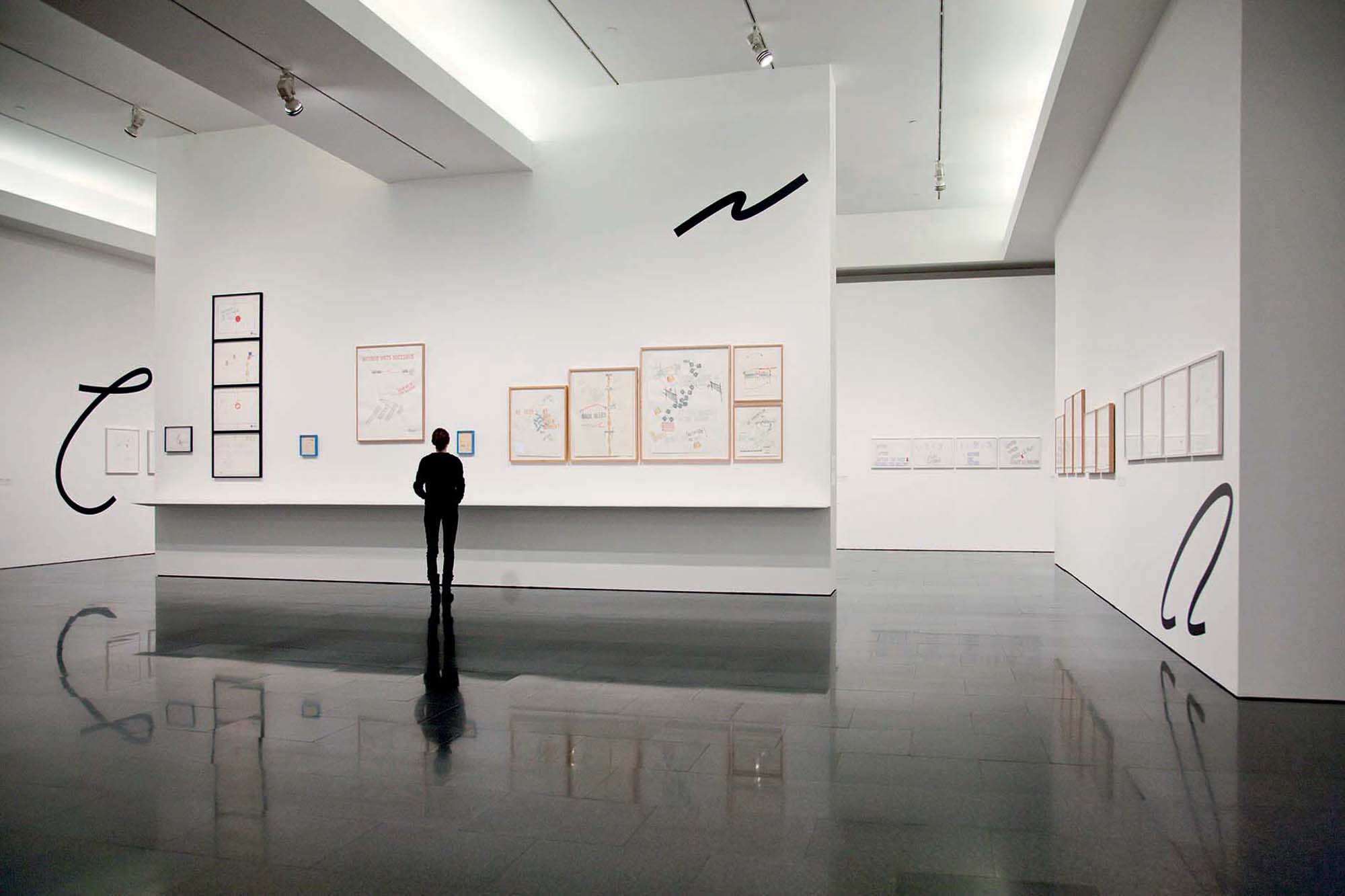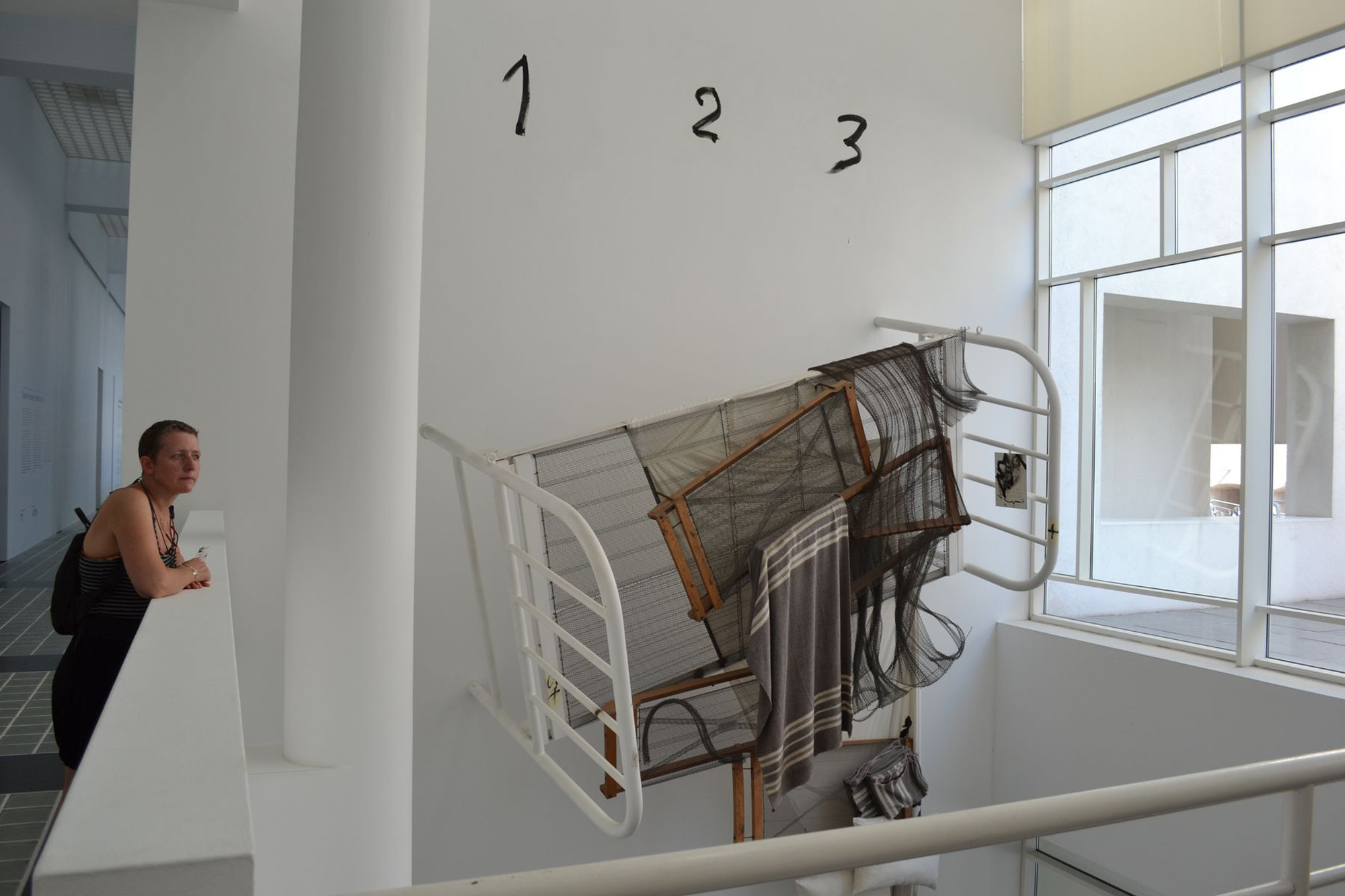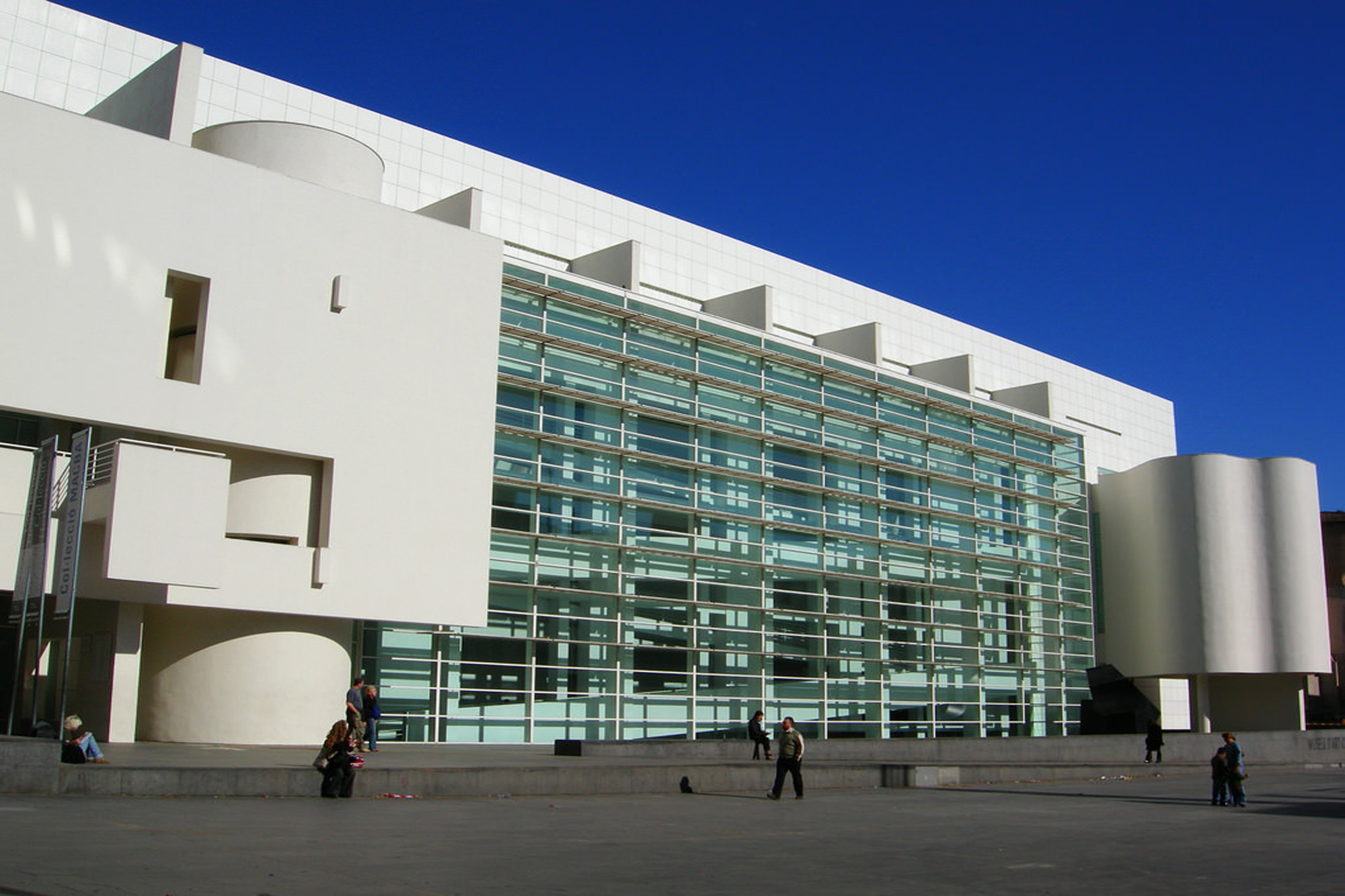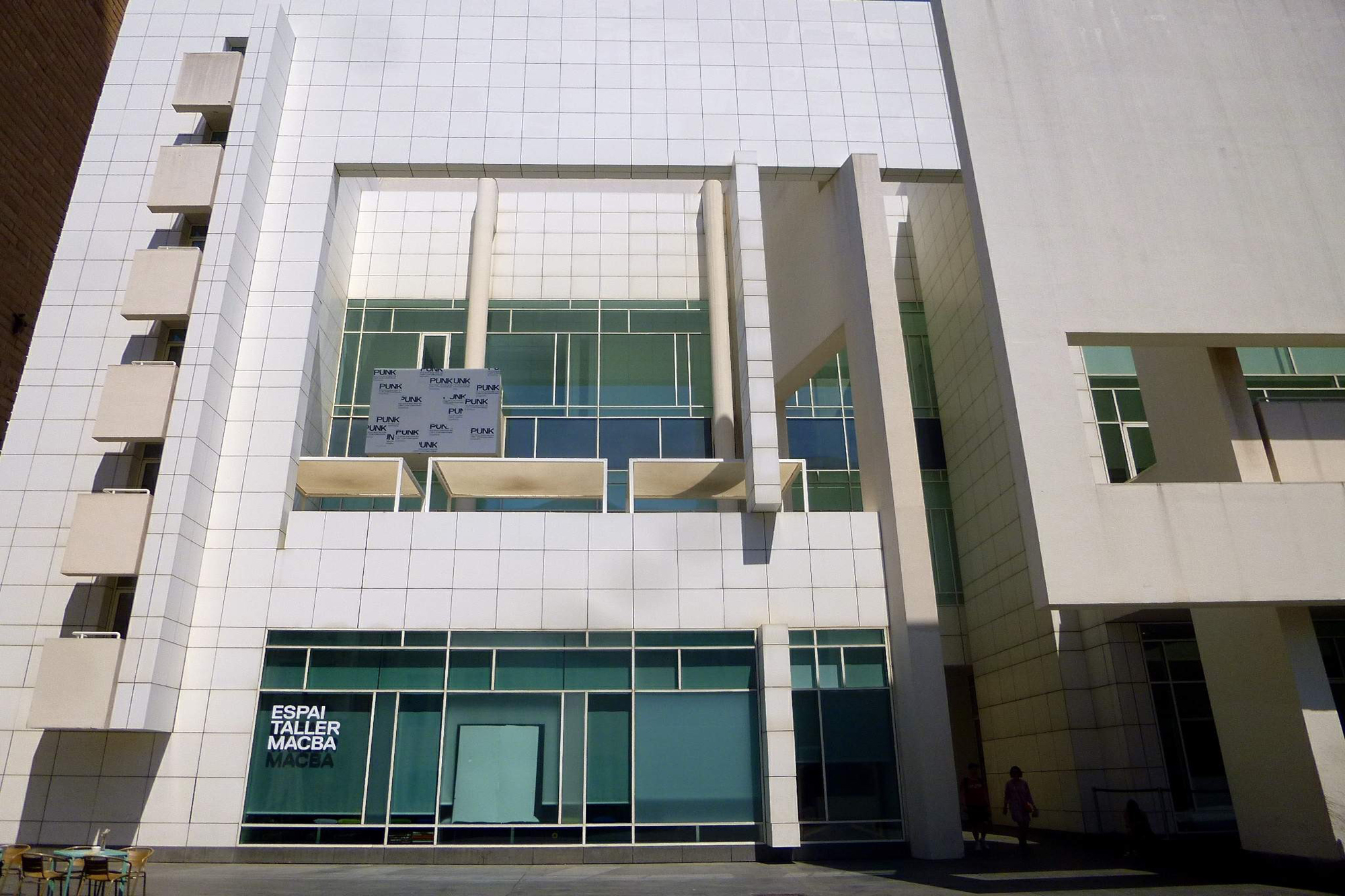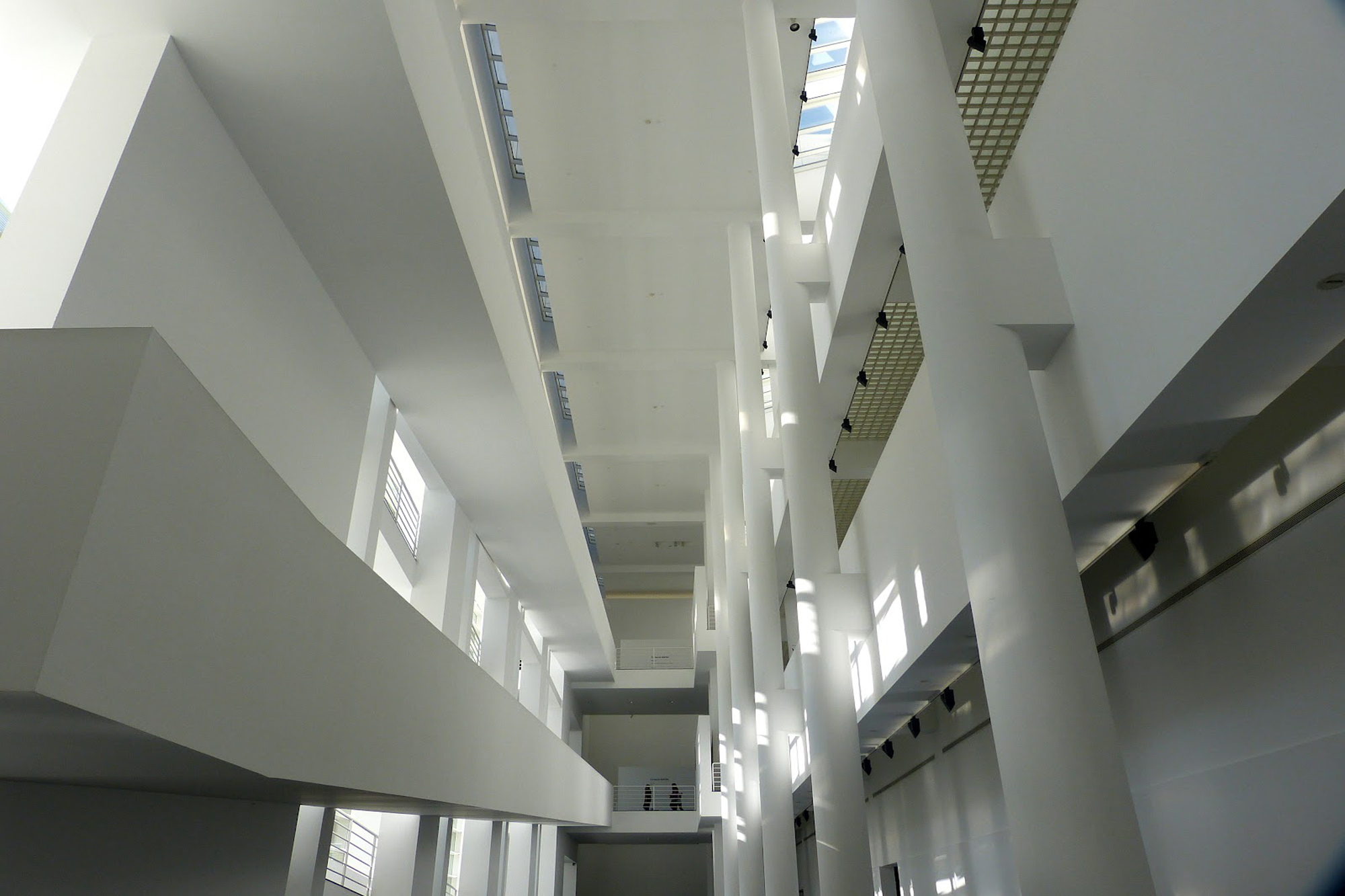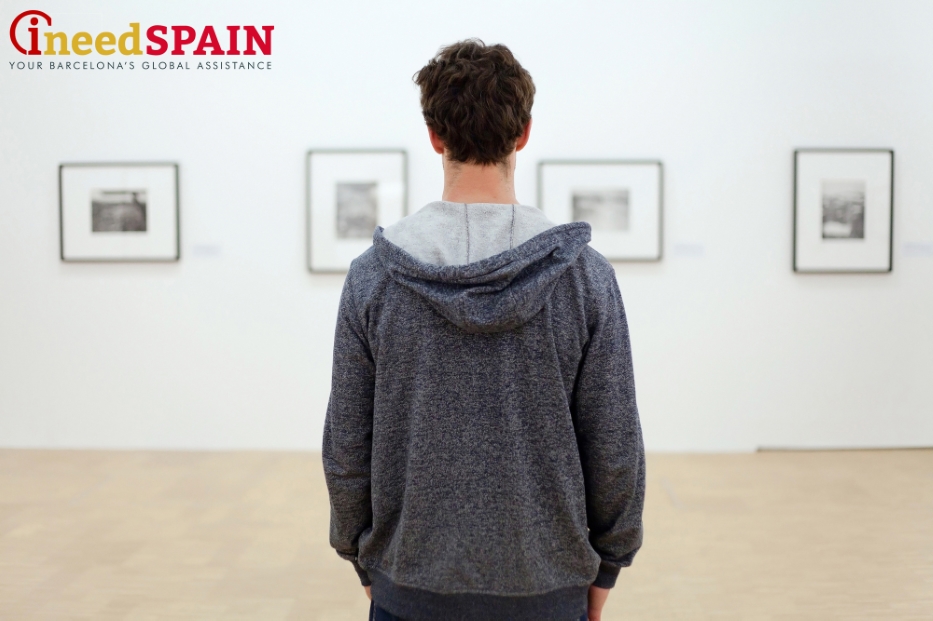
The museum opened its doors to the public on November 28, 1995. Its collection continues to grow and is becoming an enduring showcase for contemporary creativity. The museum’s artistic direction continues to be developed through research and is reflected in the works of the museum’s contemporary artists.
Museu d'Art Contemporani de Barcelona was founded in 1959, when the art critic Alexander Chirichi Pellicer proposed the creation of a museum of contemporary art in Barcelona. Chirichi, Cesareo Rodriguez-Aguilera, and other prominent figures in Barcelona assembled a collection that marked the beginning of the museum's history. They organized a series of exhibitions with works by such contemporary artists as Anthony Bonet, Jordi Kuros, and Jean Fotier. However, in February 1963, the exhibition, “L'art i la pau,” which had obvious political implications, marked the end of the progress begun by Chirichi and Rodriguez-Aguilera. Part of the historical collection was sent to the Victor Balaguer Museum in Vilanova i la Geltrú.
In 1985, the counsellor of the Government of Catalonia, Joan Rigol, once again proposed the creation of a museum of contemporary art, and in 1986, the American architect Richard Mayer was put in charge of the future Barcelona's attraction architecture. In 1987, the Foundation of the Museum of Contemporary Art in Barcelona finally was founded, with the businessman Leopoldo Rhodes serving as chairman, and after that, the structure of the museum was established under the oversight of the Government of Catalonia, the Barcelona City Council, and the Foundation.
The museum’s collection begins with the material abstraction of the fifties and develops gradually to the evolution of European pop art and the vanguard of the sixties and seventies. In these pieces, the word itself and poetic experience are of great importance, along with a return to photographic imagery and the sculptural work that opposed minimalism in the eighties. The collection consists of works by Catalan, Spanish, and international artists from South America and Eastern Europe, as well as from North Africa, the Middle East, and the Arab world.
The museum is holding exhibitions of the Catalan poet Joan Bross, the American artist Martha Rosler, and the thematic architectural exhibition, “Forensic Architecture,” which is devoted to the protection of human rights.
The architecture of Museu d'Art Contemporani de Barcelona
The building of the Museu d'Art Contemporani de Barcelona is the work of the American architect, Richard Mayer. The project, developed in 1990 and built between 1991 and 1995, was created as a collection of several buildings in the forms of prisms and occupies about 14,300 m2. The center is a hollow cylinder that permeates every floor, from the cellar to the roof, and creates exhibition areas along the longitudinal axis on three floors, starting on the first.
Richard Mayer's architecture primarily reflects a formal rethinking of rationalism, influenced by the founders of the modern movement, particularly Le Corbusier. The building is decorated with a combination of rectilinear and curved elements, as well as geometric figures softened by the external light that penetrates the building through the open galleries and large skylights.
The main entrance is located at the center of the facade, at the beginning of a passage connecting the garden and the main building. The passage divides the first floor into two areas: the book and museum stores and the lobby leading to the exhibition halls (of approximately 4980 m2).
The administrative part of the building, which can be accessed from the western facade, consists of a registration desk for museum offices, a loading dock, and 1475 m2 of office space. The technical installation and warehouse are located in the basements, which occupy 2250 m2 of the building.
Natural light penetrates the building through the corner hollows, curtained walls, and openings in the ceilings. Some structural elements are separated from the facade to ensure continuous lighting. This concept was developed for the atrium as well, which forms an integral part of the space. The atrium is a closed gallery, parallel to the facade, which filters and distributes the light through all three levels of the museum. The atrium also connects the three floors with a series of passes leading to the exhibition halls.
Museu d'Art Contemporani de Barcelona ticket prices and hours

- The admission fee is 10 euros. Tickets are valid for 1 month from the purchase date and include an unlimited number of visits to all current exhibitions. Admission is free for children under 14 years.
- The museum is open on weekdays from 11:00 to 20:00, on Saturdays from 10:00 to 20:00, and is closed on Tuesdays. The opening hours on Sundays and public holidays are from 10:00 to 15:00.
- To reach the museum, you can take metro lines L1, L2 (Universitat), and L3 (Catalunya or Liceu), as well as bus lines 7, 9, 13, 14, 16, 17, 20, 24, 37, 41, 42, 50, 54, 55, 58, 59, 62, 63, 64, 66, 67, 68, 91, 120, 121, 141, and H12.
- The Renfe train stops at Plaça Catalunya Station, and the car parking lot is located on Plaça dels Àngels Square.
Specialists from INEEDSpain company will be glad to answer any questions, organize a sightseeing tour in Barcelona with a professional guide, and assist in purchasing entrance tickets, according to our clients’ preferences. Please contact the INEEDSpain office for consultations, information on business and life in Catalonia, or for assistance with residence documentation. Our contact details are located on the principal web page.




